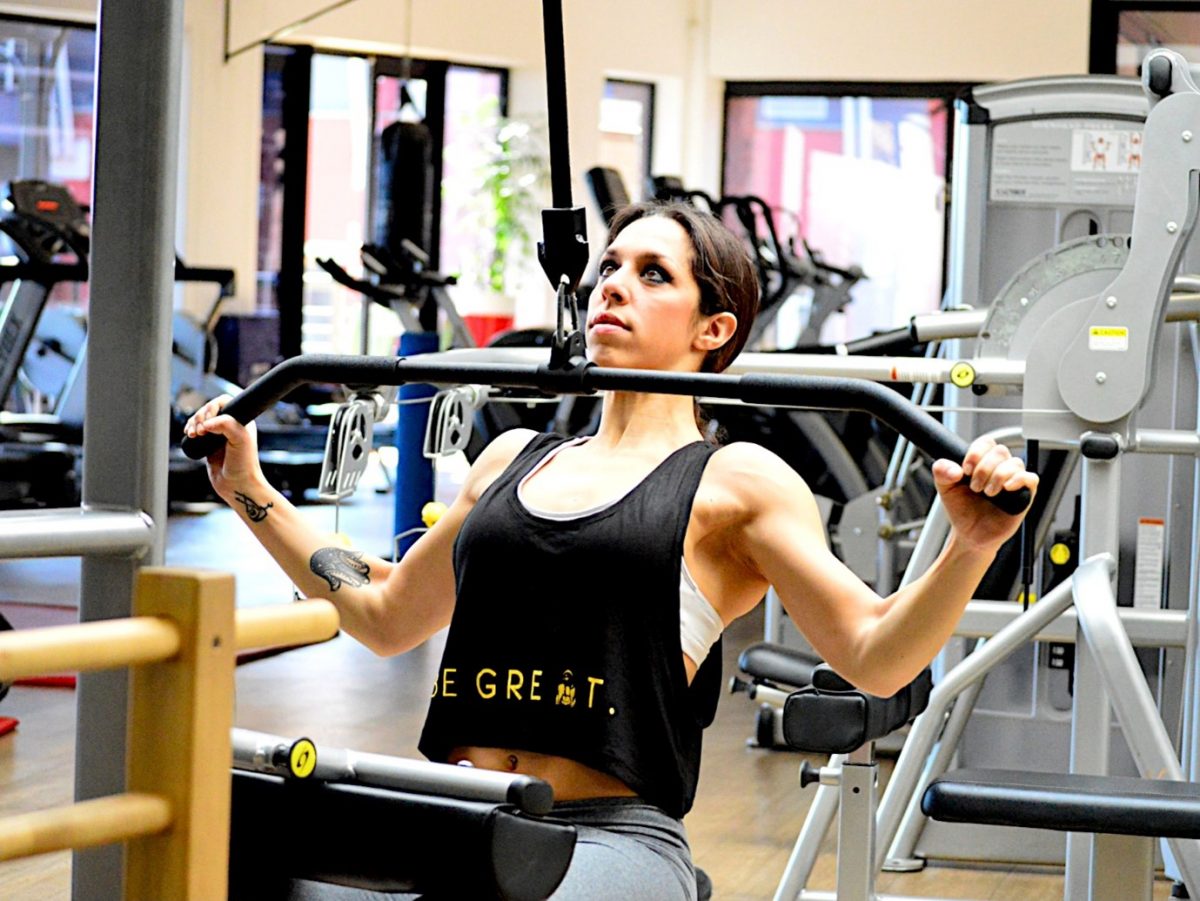Extra training for swimmers: shoulder, chest and arm muscles can be trained well in the weight room. We explain what to look out for during training.
Strength building and injury prevention
The complex anatomy of the shoulder allows for a large range of action, which can be utilized in crawl swimming. On the other hand, the monotonous, internally rotated motion of crawl swimming, as well as the repetitive overhead loads, put a lot of strain on tendons and muscles of the shoulder rotator cuff. The more intense and ambitious an amateur athlete swims, the more important regular strength training becomes. Anyone who engages in targeted swim training three or more times a week, wants to improve their performance and avoid overuse injuries, would do well to schedule strength training on land at least twice a week. This can be done on machines, with your body weight, or even with dumbbells or filled PET bottles as a substitute for dumbbells.
How much weight should I use?
If you are new to strength training, you should give your musculoskeletal system enough time to adapt. This means training with moderate weights for around 8 to 12 weeks, with the focus on an even, smooth execution of movements. The movements must not shake at the beginning of the set! For each exercise, 12 repetitions of 2 to 3 sets with pauses of 45 to 60 seconds are recommended. Only after that, at intervals of 6 to 8 weeks, the weights are increased by about 10 to 20 % each time.
Advanced athletes who have been building strength for many years train with high weights and fast movements in order to train intramuscular coordination. This is necessary to keep the situation-specific monotonous work performed by the muscles in the crawl smooth and trouble-free. Weights of around 90 to 95% of maximum strength are moved as quickly as possible in the pattern of the final movement (concentric phase), while the weight is returned slowly and in a controlled manner in the eccentric phase. One to three repetitions of three to five series per exercise are recommended. The break between the series is three to five minutes. Maximum strength training, as practiced by many top swimmers, is not recommended. This is because most amateur athletes are not so well trained that maximum strength training would increase the risk of injury.
Exercises for “swimmer muscles”: Strength building on land
Elbow extension
The highest speed within an arm stroke is achieved at the end of the pressure phase. The more developed the elbow extensor/triceps muscle, the more powerful the push-off.
Exercises: Push-ups with tight upper arms; from a bent but straight torso position, extend arm backward with dumbbells in one arm from an angled position (kickbacks).
Important: Work without momentum, elbow position remains the same during the exercise.
Pectoralis major muscle
The large pectoral muscle is primarily responsible for the inward rotated motion and the transition from the pull to the push phase during the crawl.
Exercises: Classic bench press, wide push-ups or chest flys, the latter of which can be performed on appropriate machines as well as against the resistance of an elastic band or with dumbbells.
Important: upper arms are always horizontal at the level of the shoulder line.
Deltoid muscle
In the recovery phase, the elbow should be the highest point. The deltoid muscle plays a significant role in this.
Exercises: Front and side lifts of dumbbells or even against the resistance of a rubber band on which you stand. Raise the arm to shoulder height with a right angle at the elbow joint.
Important: Consciously tense back and abdominal muscles for stabilization.
Latissimus dorsi Muscle
The large back muscle/latissimus is responsible for the powerful movement in the first part of the underwater phase.
Exercises: Overhead movement on the latissimus machine in the weight room, with the elastic band or even with pull-ups.
Important: do not raise shoulders.
This Blog Article was made available to us by Fit for Life. Fit for Life is the Swiss magazine for fitness, running and endurance sports. Would you like to read such articles regularly? Then Click here.

